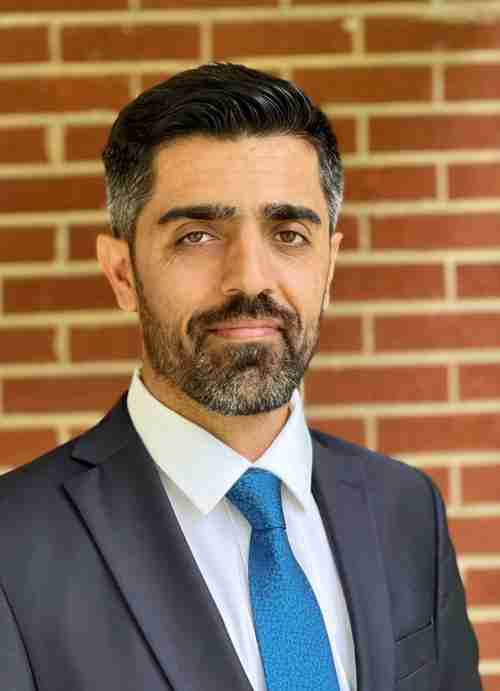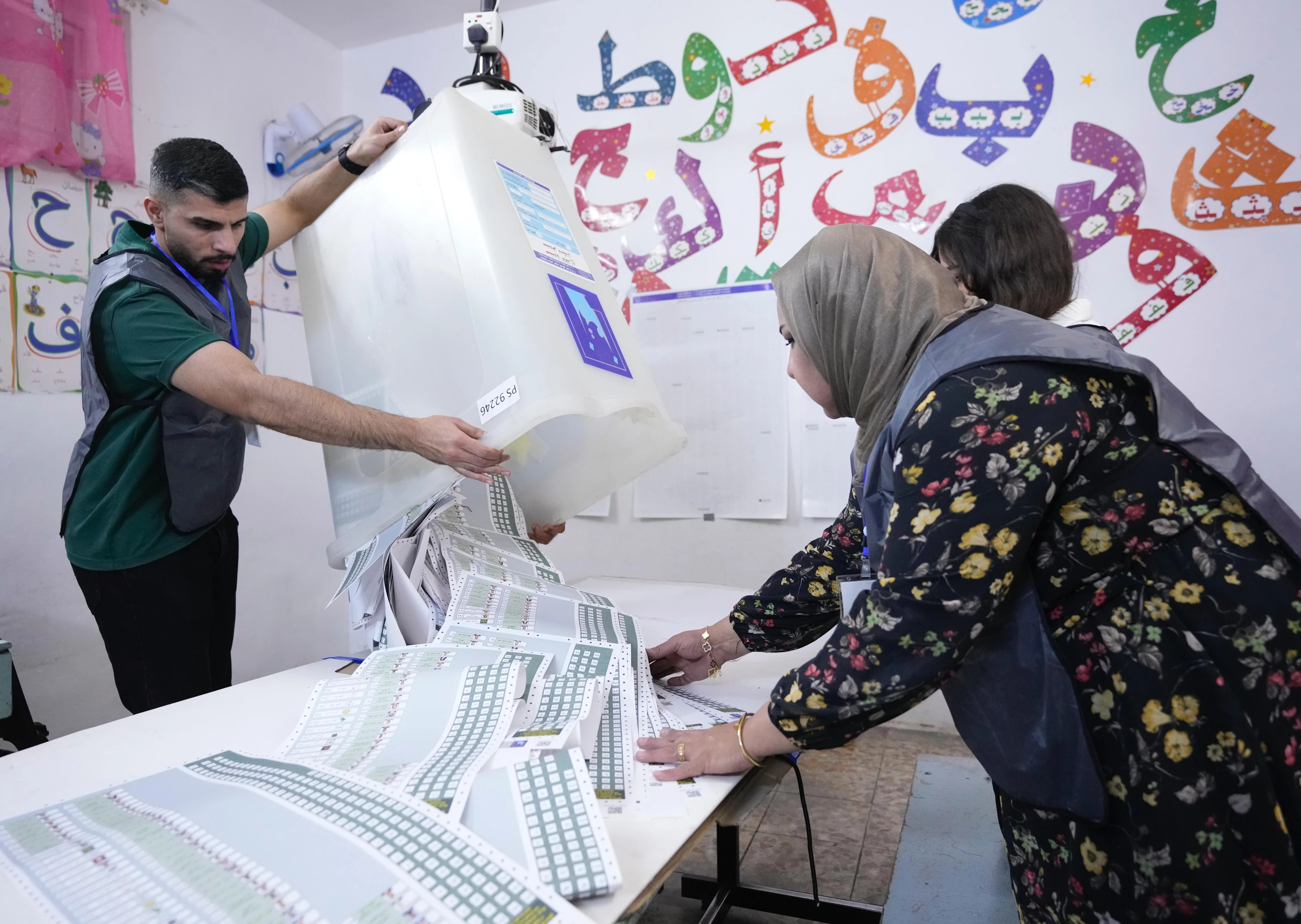Iraqis went to the polls on November 11 in the sixth parliamentary elections since the fall of Saddam Hussein’s regime. Despite all the challenges Iraq has faced, it is worth recognizing that the country has managed to hold several rounds of elections—an achievement in itself. Still, Iraq’s electoral system is structured in a way that rarely produces major shifts in the political landscape or governance due to Iraq’s complex power matrix. Elections mostly serve to redistribute influence, determining who gets what share of power and how patronage networks expand within the state and society.
Voter turnout this time was officially 56 percent of 21.4 million registered voters, up from 43 percent in the 2021 parliamentary elections. However, when measured against all citizens of voting age—29 million—the turnout drops to about 41 percent. The higher turnout is significant, but it would be misleading to read it simply as a sign of renewed participation. Reports point to a notably high number of void ballots. For instance, in the Kurdistan Region, there were around 250,000 void ballots—enough that, if counted as a party, they would have come in third place there. While some may be due to voter mistakes, many appear to be deliberate acts of protest by people compelled through patronage networks to vote but disillusioned enough to intentionally spoil their ballots. This suggests a deepening legitimacy crisis in Iraq’s post-2003 political order, including in Kurdistan, one that risks generating even greater frustration and instability if left unresolved.
The most novel, though not really surprising, feature of this election was the strong showing of Prime Minister Mohammed Shia' al-Sudani’s Reconstruction and Development Alliance (RDA). Based on based on preliminary results released by the electoral commission on November 12, the RDA has emerged as the leading Shiite and national vote-getter but remains well short of a parliamentary majority—165 seats for a simple majority. As an incumbent, Sudani used state resources to expand the public sector and entrench patronage networks, a well-worn tactic in Iraqi politics. Among Kurdish parties, the Kurdistan Democratic Party (KDP) dominated the scene, while Taqaddum captured the largest share of Sunni votes.
The results confirm what has long been evident: those who actually vote tend to do so in line with patronage ties that flow through ethnic and sect-based networks, undergirding the Iraqi political system. As a result, electoral competition remains largely intra-communal rather than inter-communal, except to some extent in mixed provinces such as Baghdad, Nineveh, Kirkuk, Salahaddin, and Diyala.
The multi-district nature of Iraq’s elections—where each province constitutes an electoral district—has also had the effect of punishing large parties with broad but uneven support. The KDP, for example, won nearly 1.1 million votes but will secure fewer seats than the largest Shiite parties, most of which receive under one million votes. The design of the system reinforces competition within communities rather than across them, and overall tends to disfavor big parties outside of the Shiite milieu.
The results make clear that no group won a majority sufficient to form a government on its own. With his relatively positive reputation for delivering on infrastructure and public services, Sudani is clearly seeking a second term. He likely hopes his recent pro-US gestures—such as awarding contracts to American firms like ExxonMobil, Chevron, and General Electric, and attending the Gaza Peace Summit in Egypt alongside President Donald Trump—will help secure Washington’s backing. Yet he faces major resistance from his former allies in the Shiite Coordination Framework, which has been the main governing bloc since the 2021 elections. Nouri al-Maliki, who followed Sudani as runner-up among Shiite factions, has not concealed his disdain for him, accusing Sudani of breaking a 2022 promise not to contest elections.
Two developments, both little noticed outside Iraq, could complicate Sudani’s position and the outcome of these elections. The first is a statement by Chief Justice Faiq Zidan, published in the pan-Arab Asharq al-Awsat on November 8, declaring that holding the elections on November 11 was “unconstitutional” and that they should have been held on November 24, that is, 45 days before the expiration of the outgoing parliament. Curiously, he still voted that day in front of cameras. Zidan also emphasized that the next government must be formed within the constitutionally mandated four months after final ratification of the results. The Coordination Framework echoed this point about “constitutional deadlines” in statements on November 10 and 11, insinuating that the judiciary could intervene to block Sudani if he exceeds the four-month limit mentioned earlier by Zidan while trying to assemble a governing coalition of just over two-thirds of parliament’s 329 seats.
Compounding this are a series of leaked audio recordings purportedly featuring Sudani making critical remarks about Iraq’s political elite and even the Shiite clerical establishment. The authenticity of these clips remains unverified, but in Iraq’s heavily politicized judicial environment, they could serve as justification for intervention, especially if they align with Tehran-leaning factions within the judiciary.
Iraq’s courts have played kingmaker before. After the 2010 and 2021 elections, they issued rulings redefining what constituted the “largest bloc” and the quorum needed for the session that nominates the president. The judiciary could again find creative ways to shape post-election outcomes. The idea of enforcing constitutional deadlines—which has never been respected in any election since 2005—might now be invoked to limit Sudani’s maneuvering space.
The deeper question, though, is who will ultimately form the next government and nominate the prime minister. Since 2005, Iraq has followed a peculiar tradition: no top vote-getter has ever become prime minister. In 2005, Ibrahim al-Jaafari, the interim prime minister and leader of the victorious Shiite list, lost his position to the then little-known Nouri al-Maliki. Four years later, the cross-sectarian al-Iraqiya Alliance won the most seats, yet Maliki remained in office through controversial court rulings. In 2014, Maliki’s State of Law Coalition led the polls, but Haider al-Abadi was chosen instead, largely due to US frustration with Maliki’s policies that enabled the rise of the Islamic State. In 2018, Abadi won the most Shiite votes, yet Adil Abdul-Mahdi, who had no party base, became prime minister. In 2021, Muqtada al-Sadr’s movement emerged as the top Shiite winner, but his rivals eventually formed the government and nominated Sudani, whose own party then held just two seats. Iraqi politics continues to defy electoral logic, with outcomes driven primarily by the interests of dominant Shiite groups and, to a lesser extent, Kurdish and Sunni actors.
The question now is whether Sudani can keep his job—and whether both Washington and Tehran will support him. He has made efforts to endear himself to the United States, but his growing friction with some Coordination Framework figures and Iran-aligned armed factions has led to speculation that he might be unacceptable to Tehran. That, however, would be a misreading. In reality, Sudani has been remarkably accommodating to Iranian interests. Under his tenure, the Popular Mobilization Forces (PMF), an umbrella for Iran-backed militias, expanded from roughly 120,000 to nearly 240,000 members. The PMF’s economic arm, the Muhandis Company, has extended its reach across multiple sectors through opaque contracts.
During Sudani’s term, pro-Iran factions have also deepened their penetration of Iraq’s military, intelligence, and bureaucratic institutions. Iran’s oil-smuggling and money-laundering operations have persisted, often through official channels, until US pressure and sanctions forced some restraint and accountability. Sudani’s electoral alliance itself includes key Iran-linked figures such as PMF chief Falih al-Fayyadh and Ahmed al-Assadi, head of Kata’ib Jund al-Imam. After October 7, Sudani’s government granted refugee status to Hezbollah-allied individuals displaced from Lebanon. It failed to act to hold PMF-tied Iranian proxies, which struck Kurdish oil fields and US business interests there in July, to account. Sudani has not taken any steps to curtail the funding or arming of PMF factions known to have engaged in malicious acts that risk dragging Iraq into war with Israel and strong retaliation from the US. He sent a bill to the parliament extending the powers and cementing the status of the PMF (the bill was removed from the voting agenda due to US pressure). Sudani also pushed for an agreement to expel US troops from Iraq in 2023 under strong pressure from PMF groups (for now Shiite forces have backed down from this due to the unfavorable regional environment).
Hence, it’s hard to see why Iran would be unhappy with Sudani. Another term for him would likely be welcomed in Tehran as a stabilizing outcome that still keeps Iraq within Iran’s sphere of influence while keeping the US somewhat satisfied too.



 Facebook
Facebook
 LinkedIn
LinkedIn
 Telegram
Telegram
 X
X